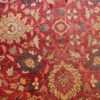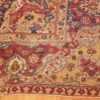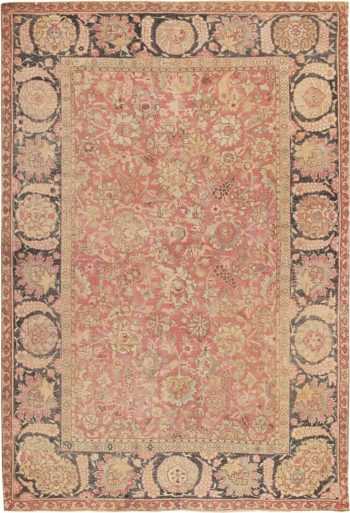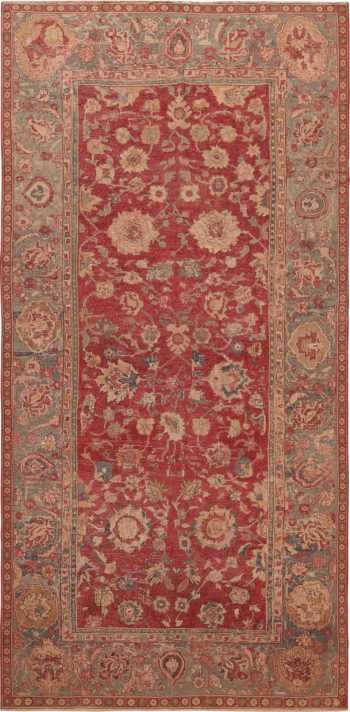Large Antique 17th Century Mughal Gallery Carpet 47597
The Comprehensive History of a 17th Century Gallery Mughal Indian Carpet #47597
This magnificent kellegi format Mughal carpet belongs to a small, selective group of early 17th Lahore carpets strongly influenced by 16th century medallion carpets from S.W. Persia, our Indian carpet shares a red field with arabesques and palmettes with a similarly large piece in the Gulbenkian Collection, Lisbon (8.4 x 23.2). The latter, however lacks the corner pieces of our carpet.
The medallion, on this antique rug, with teardrop shaped pendants is close to the Trinitarians carpet in the National Gallery of Australia in Melbourne (11.0×34.3). The flame-like edgery of 47597 is close to the Gulbenkian piece.
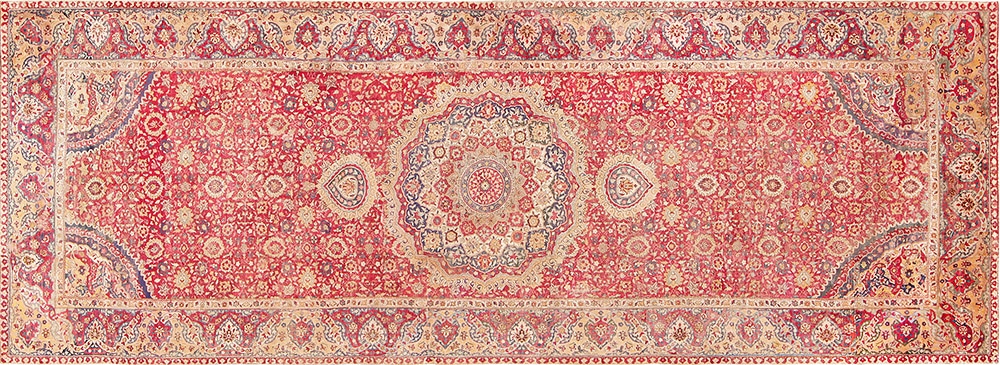
17th Century Mughal Indian Carpet
All in all, these three rugs form a coherent group, and with others more of less closely related, seem to be the products of a particular, accomplish workshop. The borders diverge in that one has palmettes and strap-work while the Gulbenkian carpet has cartouches and the Melbourne piece has two types of octofoils. Our border is red and yellow, whereas Trinitarias is in ivory, our piece avoids the border cloud-bands of the other two carpets.
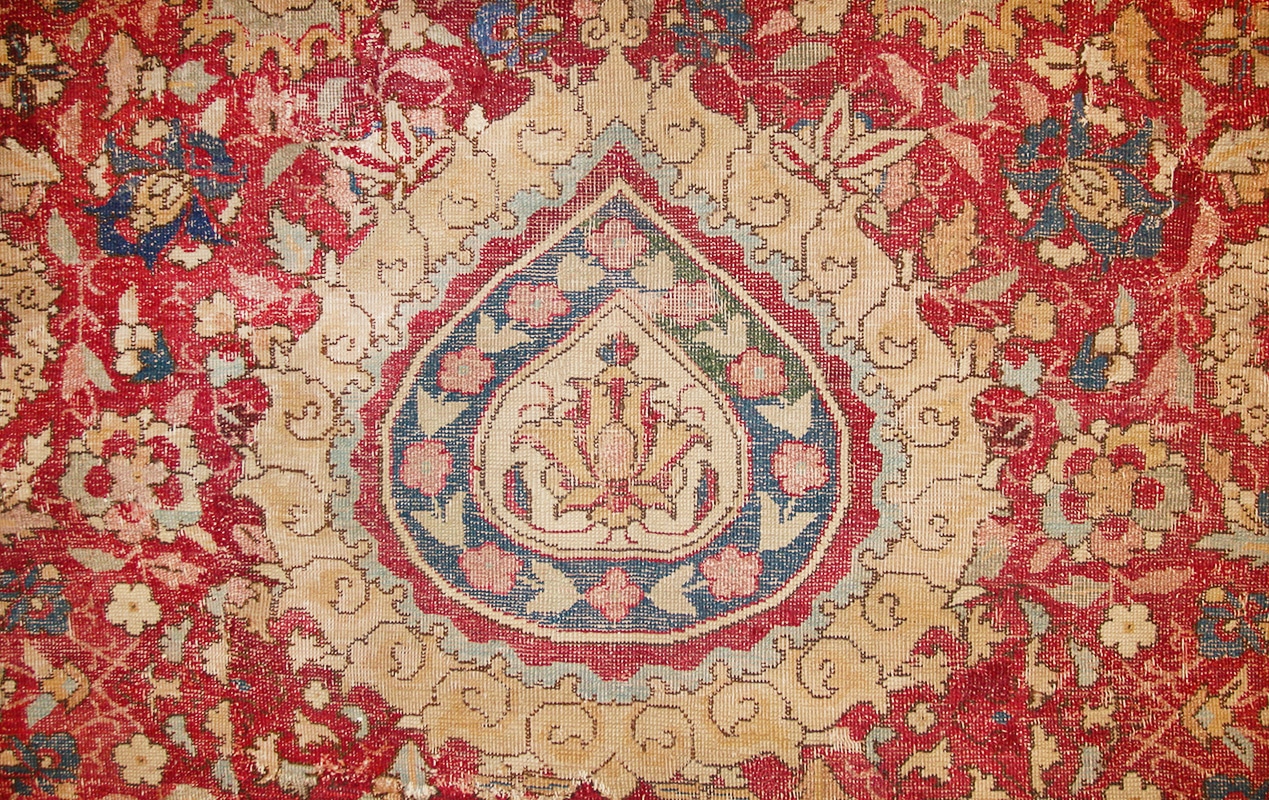
17th Century Mughal Indian Carpet 47597
The red hue, as is general with Indian carpets of any period, is Indian, giving a rich, purplish red. Madder is not used in Indian rug weaving. Yellow plays a much larger role in the color palette in 47597 than in its compatriots- in border, corners and medallion.
Other parallels with the published examples can be briefly noted, the rounded center of 47597 is virtually identical to Gulbenkian’s as is the yellow flame edging of two medallion. All three pieces share a scalloping or lobbing of the central medallion.

17th Century Mughal Indian Central Medallion Carpet 47597
This style of Lahore carpets did not persist after the 1640’s, being replaced by the red ground type with realistically drawn complete flowers. These seem to be the result of the Emperor Jahangir’s sojourns in Kashmir in the 1620’s where he was amazed at the protrusion of flowers and instructed his artists to capture them on paper.
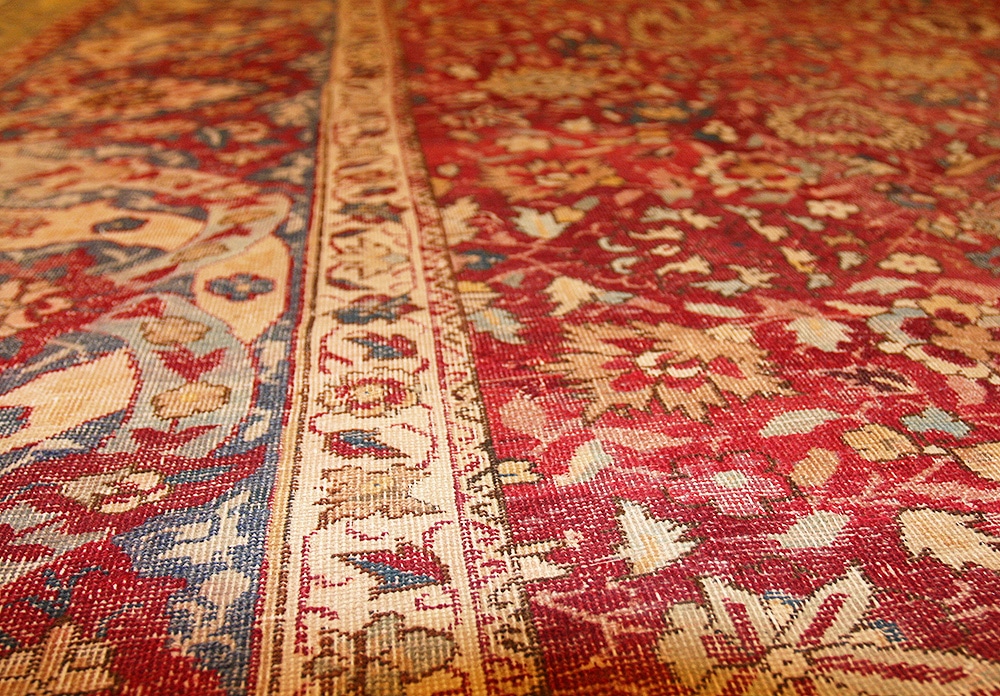
Breathtaking Colors Of 17th Century Mughal Indian Medallion Rug 47597
The step to the carpets of the Shah Jahan period is short. Therefore a date prior to about 1630, probably closer to 1600 is appropriate for the groups.










